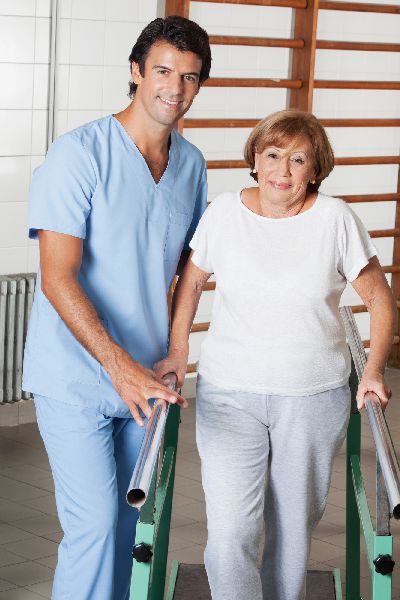 There are always limitations when a patient is recovering from any surgery. Knee replacement surgery requires the addition of physical therapy. For a successful recovery, it must be done. In the first hours after surgery, the patient will be exercising or doing movements that will help get them up and out of bed as soon as possible. The patient's doctor determines the recovery plan, and there can be different requirements for different people. The following is the general plan followed by most knee replacement patients. The closer a patient follows their doctor's specific orders, the sooner they'll return to normal activities.
There are always limitations when a patient is recovering from any surgery. Knee replacement surgery requires the addition of physical therapy. For a successful recovery, it must be done. In the first hours after surgery, the patient will be exercising or doing movements that will help get them up and out of bed as soon as possible. The patient's doctor determines the recovery plan, and there can be different requirements for different people. The following is the general plan followed by most knee replacement patients. The closer a patient follows their doctor's specific orders, the sooner they'll return to normal activities.Inpatient Day 1 to Day 3
The best way to recover from knee replacement surgery is to use the knee and to strengthen the surrounding muscles. On day one, the patient starts slowly with sitting exercises and short walks, increasing to standing exercises that build strength and increase flexibility. Adding exercise machines such as a continuous passive motion machine may also be added.
A continuous passive motion machine (CPM) is mainly used for flexion and extension of the knee as a part of rehabilitation to improve mobility after a total knee replacement. Using a CPM is not a replacement for exercise therapy but is useful because it gets the patient used to moving the new knee and prevents scar tissue from forming.
By day two, the physical therapist will encourage regular intervals of standing, sitting, and walking small distances with the assistance of a walker. Over time it will become easy to use the walker for more extended periods.
On the third day, if the patient is handling getting around with a walker, they should be able to be discharged from the hospital. Their doctor may prescribe a lower dosage medication for pain management. By discharge, a patient should be able to:
- freely move from lying in bed to a standing position with little or no help.
- walk at least twenty-five feet, and handle going up and down stairs using alternating foot
- bend the affected knee to a 90-degree range of motion
- maneuver sitting to standing transfers on their own.
The patient should be able to get around with less assistance. The patient should be able to do exercises for the knee independently and consistently.
Required treatments include regular rehab sessions for monitoring and improving mobility and range of motion. Use ice for swelling as needed. Use of the CPM machine at home, if prescribed.
Weeks 4-6
At this point, the patient should continue walking for extended periods and do exercises at home. With the doctor's or the PT's recommendation, the patient should be able to go to work and drive. Further treatment includes regular rehab, along with strength and flexibility training.
Weeks 7-12
The patient is walking for more extended periods. They can now use a stationary bike and continue prescribed stretches and exercises. Extend flexion should now be 115 degrees. If the patient has been consistent with physical therapy exercises and walking, they should notice a considerable improvement in their mobility. The patient can return to recreational activities such as bicycling, recreational walking, and swimming.
Week 13 and Beyond
The patient will be able to bend the new knee to a 115-degree bend, and pain should be barely noticeable. It is best to hold back on high-intensity exercises such as running, aerobics, skiing, and high-cardio sports. The patient should get clearance from their doctor before participating in these sports. If the patient experiences pain or any unusual change in the movement of the knee, they should contact their doctor.
For more information on knee replacement surgery contact Dr. Dan Albright at 919-863-6808.





